#Hermitage of Saint Louis
Text



This is the Hermitage of Saint Louis, in Faro, a rather nice example of the Portuguese Plain Style of the first half of the XVII Century.
Nowadays, this small church stands just next to the Saint Louis Stadium, home of the local football club (Sporting Clube Farense - simply known as Farense), but, in the first half of the 1600s, this part of the city was no more than a rural area on the outskirts of the capital of the Algarve.
#Hermitage of Saint Louis#Ermida de São Luís#Farp#Século XVII#Siglo XVII#XVII Century#Portuguese Plain Style#Estilo Chão Português#Algarve#Sotavento#Portugal#Original photos#photography#photographers on tumblr
20 notes
·
View notes
Text
Peterhoff Palace Complex

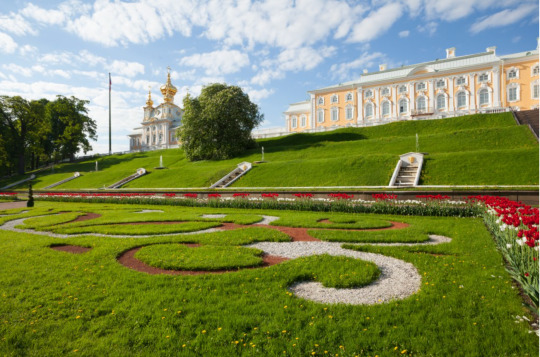

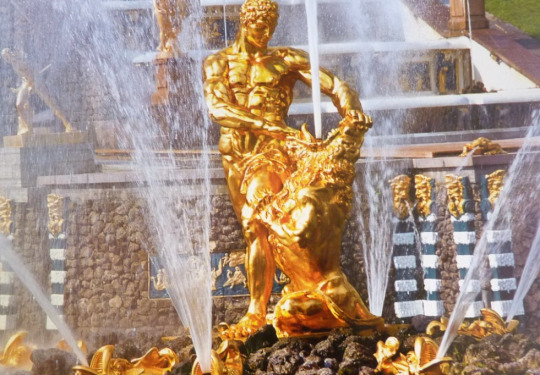

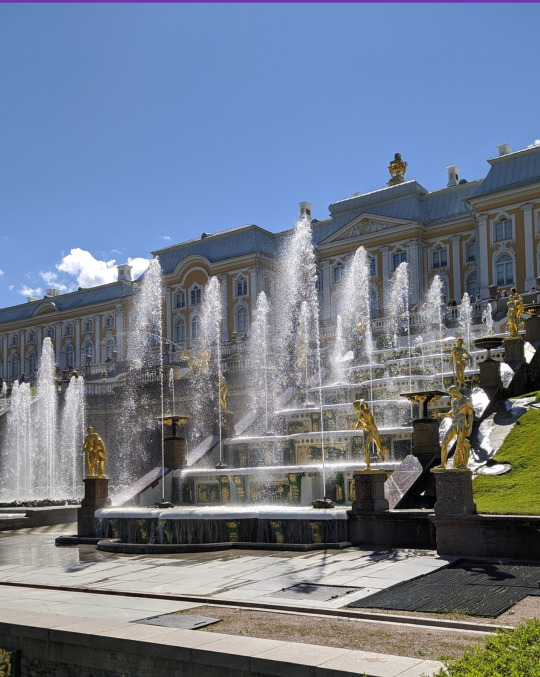
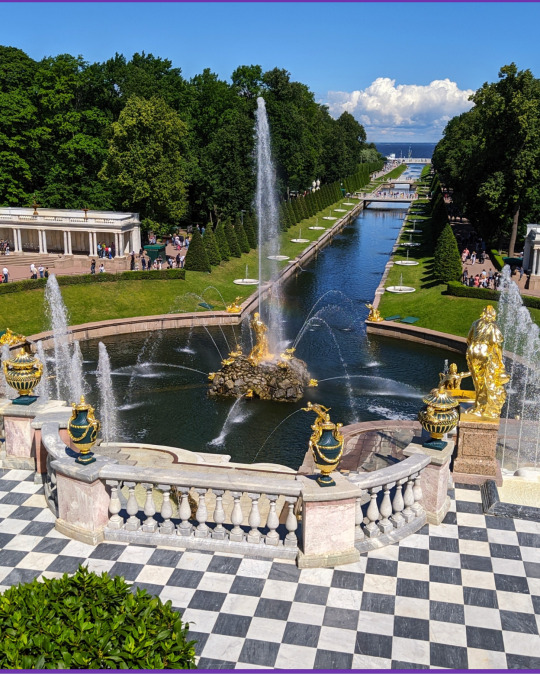
Photographs: Different views of Peterhof, which, rather than one specific place, is an astoundingly beautiful complex of palaces, gardens, pavilions, and fountains. The photos here and the text are a mere preview of a fraction of the place in all its grandeur.
The Grand Palace, Lower and Upper Gardens and Fountains
The Peterhoff Palace (which comes from the Dutch "Pieterhof," meaning "Pieter's Court") is a complex of palaces, gardens, pavilions, and fountains located in Petergof, Saint Petersburg, Russia, commissioned by Peter the Great in response to Louis XIV Palace of Versailles in France.
Peter the Great began constructing his new capital, St. Petersburg, in 1703 after successfully adding Swedish provinces to Russian territory. Saint Petersburg allowed Russian access to the Baltic Sea through the Neva River that flowed to the Gulf of Finland.
Throughout the early 18th century, Peter the Great built and expanded the Peterhof Palace complex. Based on his sketches, he constructed the Monplaisir Palace (French: "my delight"). This would be Peter's summer retreat that he would use on his way coming and going from Europe. Later, he expanded his plans to include a group of palaces and gardens further inland, on the model of Versailles.
Most of the Peterhoff land is comprised of what is called the "Lower Gardens." In the middle of the lower gardens is the Grand Palace. The area behind this palace is the "Upper Gardens" and is comparatively smaller. The Grand Palace is not the only historic royal building in Peterhoff. The palaces of Monplaisir and Marli, as well as the pavilion known as the 'Hermitage,' were all raised during the initial construction of Peterhoff during the reign of Peter the Great.
There are a number of cascades and fountains through the grounds, which have various symbolic meanings and are in themselves great technological achievements. The greatest of these is that all of the fountains in Peterhoff operate without the use of pumps. Water is supplied from natural springs and collects in reservoirs in the Upper Gardens. The elevation difference creates the pressure that drives most of the fountains of the Lower Gardens.
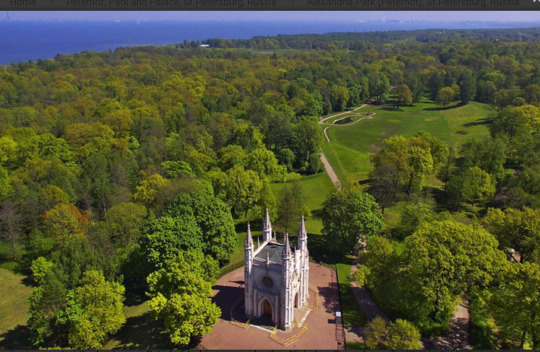
Gothic Chapel in Peterhof: An Orthodox church in the name of Saint Alexander Nevsky situated in the Alexandria Park; Nicholas I ordered its construction to complement the Cottage Palace
Alexandria Park, the Cottage Palace, and the Farmers Palace
To the east of the main park at Peterhof lies an expanse of landscaped parkland in the English style, named after Alexandra Fedorovna, wife of Nicholas I. The land was used as a royal hunting ground for most of the 18th century and left to go wild after the court moved to Tsarskoe Selo.
In 1825, the land was passed to Nicholas I, who commissioned a Scottish architect and landscape gardener to create an English-style estate with a "cottage" palace and home farm. This was partly a concession to Alexandra (nee Charlotte of Prussia), who found the pomp and grandeur of court life oppressive. Alexandra loved the cottage. The Cottage Palace was completed in 1829 and became the permanent summer residence of the Tsar's family. Alexandria Park is one of the best-landscaped parks on the outskirts of St. Petersburg.
The building is equal parts seaside villa, Gothic castle, and English farmhouse, but extremely elegant, with several charming decorative details. The palace's interiors exemplify the private tastes of Nicholas and Alexandra and their children and grandchildren. The spectacular trompe l'oeil murals around the staircase, depicting gothic arches and vaults, and Nicholas's Naval Study, with superb views over the Gulf of Finland, are particularly impressive.
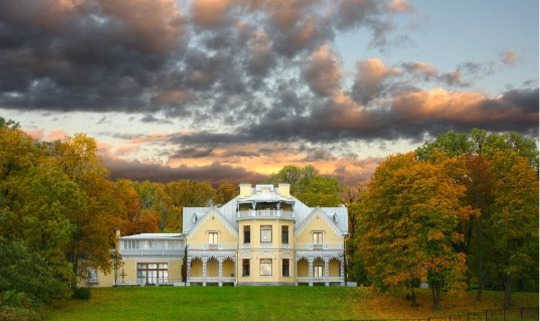
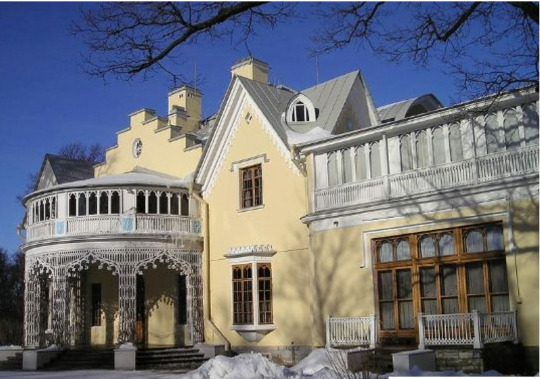

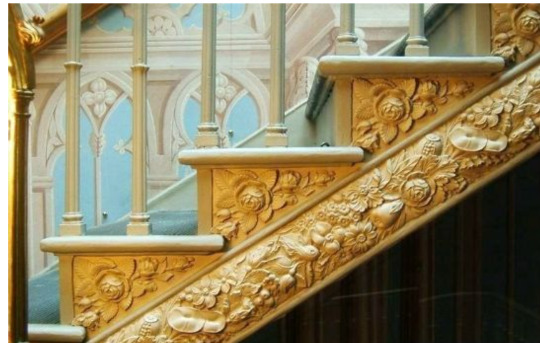
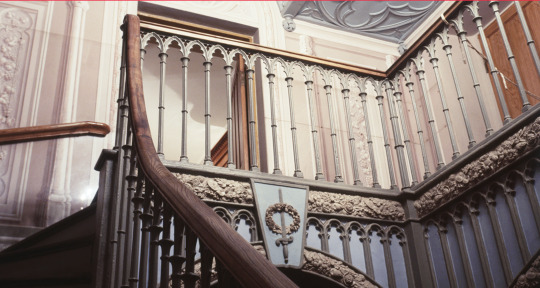
The Farm Palace was initially a pavilion in Alexandria Park close to the Cottage Palace and Gothic Chapel. Meant to be a pastoral farm with a row of household buildings, it was later expanded into a summer residence for the family of Tsesarevich Alexander Alexandrovich of Russia. The palace became the favorite summer residence of Alexander II and his family. After many reconstructions, the house was named "The Farm Palace" in 1859. It would eventually be a favorite of Alexander III and Nicholas II.
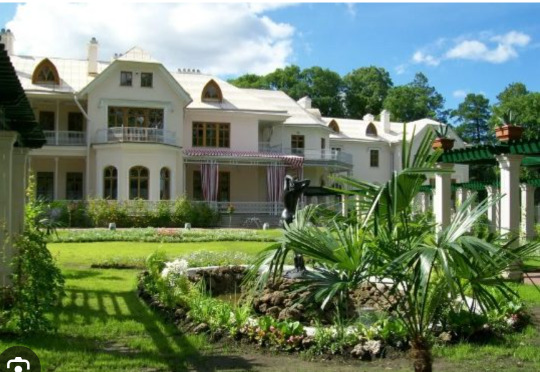
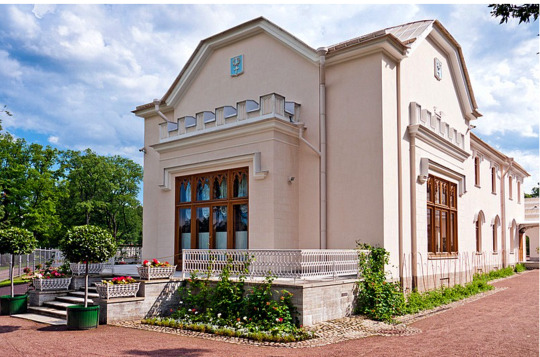

The Lower Dacha at Peterhoff (badly damaged in World War II and destroyed in the 1960s) - in the process of reconstruction
The Lower Dacha was in Alexandria Park, part of the Peterhof complex created by Tsar Peter I in the early 18th century as an Imperial summer residence. The palace was the home of Tsar Nicholas II while in residence at Peterhof (it was built for him), and several of his children were born there. It was badly damaged during the Second World War and was destroyed in the 1960s. The Lower Dacha is in the process of being restored. It is expected that the restoration will be completed by 2025. The picture below where the intact building can be seen, is from the early twentieth century. Photographs of the ruins have been included as well.
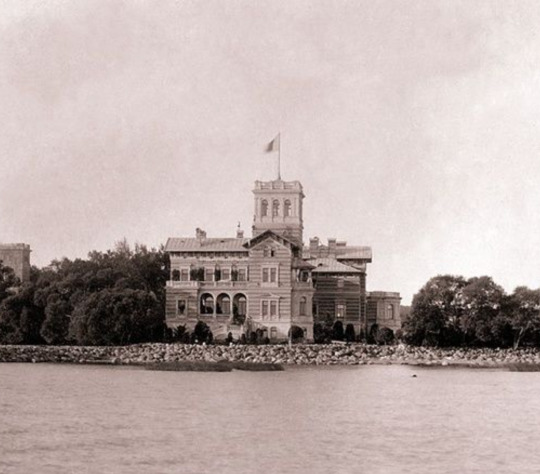
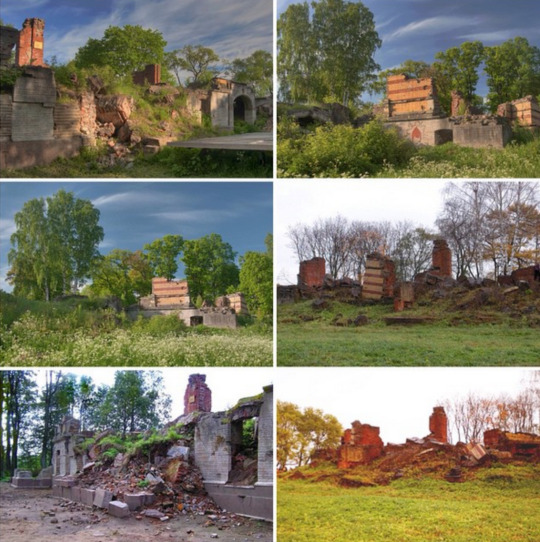
#Peter the Great#Sweden#Finland#Upper Gardens#Lower Gardens#Mon Plaisir#Grand Peterhoff Palace#Great Samsom#Neva River#The Farm Palace#The Cottage#The Lower Dacha
8 notes
·
View notes
Text
SAINT OF THE DAY (April 2)

Catholics will remember St. Francis of Paola on April 2.
The saint founded a religious order at a young age and sought to revive the practices of the earliest monks during a period of corruption in the Church.
Francis was born in the Southern Italian region of Calabria on 27 March 1416. His parents, who maintained a strong devotion to St. Francis of Assisi, named their son after him.
The boy's father and mother had little in the way of wealth, but they passed on a rich spiritual heritage to their son, with the hope that he would imitate his namesake.
The young Francis showed signs of a remarkable spiritual life, following his parents' lead in accepting poverty as a path to holiness.
When his father placed him in the care of a group of Franciscan friars to be educated at the age of 13, Francis made a personal decision to live strictly according to the rule of their religious order.
After a year with the friars, Francis rejoined his parents as they made a pilgrimage to Assisi in Rome and the historic Franciscan church known as the Portiuncula.
When the family returned to their hometown of Paola, Francis – at the age of only 15 – asked his parents' permission to live as a hermit, in the manner of the earliest desert fathers such as St. Anthony of Egypt.
The young monk slept in a cave and ate what he could gather in the wild, along with occasional offerings of food from his friends in the town.
Within four years, two companions had joined him. The townspeople assisted in building three individual cells for the hermits, as well as a chapel where a priest would offer Mass.
With approval from the local archbishop, this small group continued to grow into a larger religious order, without compromising the young founder's insistence on penitential and primitive living conditions.
They were first known as the Hermits of St. Francis of Assisi but later renamed the “Minimi” (or “Minims”), meaning “the least,” and signifying their commitment to humility.
Francis and his monks were notable not only for their austere lifestyle but also for their strict diet, which not only eliminated meat and fish, but also excluded eggs, dairy products, and other foods derived from animals.
Abstinence from meat and other animal products became a “fourth vow” of his religious order, along with the traditional vows of poverty, chastity and obedience.
Francis instituted the continual, year-round observance of this diet in an effort to revive the tradition of fasting during Lent, which many Roman Catholics had ceased to practice by the 15th century.
Ironically, Francis' pursuit of solitary communion with God attracted attention from a range of important figures, including several European kings and other nobility along with Popes and bishops.
Some of these men regarded Francis as a spiritual leader in a corrupt age, while others may have been more interested in his gifts of prophecy and miraculous healing.
Francis traveled to France at the request of Pope Sixtus IV, taking with him his nephew Nicholas, whom he had raised from the dead.
There, the notoriously power-hungry King Louis XI was approaching the point of death himself.
He hoped that Francis would perform a miracle and restore his health.
Francis told the king bluntly that he should not fear the end of his earthly life, but the loss of eternal life.
From that time, the hermit became a close spiritual adviser to the king.
He discussed the reality of death and eternity with him, and urged him to surrender his heart and soul to God before it was too late.
The king died in Francis' arms in 1483.
Louis XI's son and successor, Charles VIII, maintained the monk as a close adviser, in spiritual and even political affairs.
Nonetheless, Francis persisted in following the monastic rule he had developed while living in his hermitage outside of Paola.
He continued as superior general of the Minim Order and founded new monasteries in France.
Francis sensed that his death was approaching at the age of 91 and returned to living in complete solitude for three months to prepare himself.
When he emerged, he gathered a group of the Minim brothers and gave them final instructions for the future of the order.
He received Holy Communion for the last time and died on April 2, Good Friday of 1507.
He was beatified on 1 November 1518. Pope Leo X canonized him on 1 May 1519.
Although the Minim Order lost many of its monasteries in the 18th century during the French Revolution, it continues to exist, primarily in Italy.
Francis is said to have raised the dead; healed the sick and crippled; averted plagues; expelled demons; spoken prophetically to bishops, popes, and kings; and performed many other miracles.
He is the patron saint of Calabria, seafarers, boatmen, mariners, and naval officers.
2 notes
·
View notes
Text
Palaces are grand structures often associated with royalty, power, and opulence. Their construction typically involves vast resources, including rare materials, skilled labor, and considerable time. Below is a list of 47 of the most magnificent palaces around the world, including details about their history, architecture, and estimated costs to build, where available.
### 1. **Palace of Versailles (France)**
- **Details**: Originally a hunting lodge, Versailles was transformed into a symbol of absolute monarchy by King Louis XIV in the 17th century. The palace is famous for its Hall of Mirrors, extensive gardens, and ornate Baroque architecture.
- **Cost**: Estimated at 2 billion USD in today’s money.
### 2. **Buckingham Palace (United Kingdom)**
- **Details**: The official residence of the British monarch in London, Buckingham Palace was originally a townhouse built in 1703. It became the royal residence in 1837 under Queen Victoria.
- **Cost**: Original construction cost 7,000 GBP in the 1700s, which is roughly equivalent to 2.3 million GBP (3 million USD) today.
### 3. **Winter Palace (Russia)**
- **Details**: Located in Saint Petersburg, the Winter Palace was the official residence of the Russian Tsars from 1732 until the revolution of 1917. It is now part of the Hermitage Museum.
- **Cost**: Estimated at 2.1 billion USD in today’s money.
### 4. **Topkapi Palace (Turkey)**
- **Details**: The primary residence of the Ottoman Sultans for nearly 400 years, Topkapi Palace in Istanbul is known for its intricate tilework, opulent courtyards, and the Harem quarters.
- **Cost**: The cost is difficult to estimate but was considered one of the most lavish constructions of its time.
### 5. **Forbidden City (China)**
- **Details**: Located in Beijing, the Forbidden City served as the Chinese imperial palace for nearly 500 years, from the Ming to the end of the Qing dynasty. It is the largest palace complex in the world.
- **Cost**: Estimated at 9 billion USD in today’s money.
### 6. **Alhambra (Spain)**
- **Details**: A stunning example of Moorish architecture, the Alhambra in Granada was originally built as a fortress in 889 AD and later converted into a royal palace in 1333 by Yusuf I, Sultan of Granada.
- **Cost**: Cost is uncertain but was one of the most expensive projects of its time.
### 7. **Château de Chambord (France)**
- **Details**: Built by King Francis I, Chambord is one of the most recognizable châteaux in the world due to its distinctive French Renaissance architecture. The construction began in 1519.
- **Cost**: Estimated at 2 billion USD in today’s money.
### 8. **Neuschwanstein Castle (Germany)**
- **Details**: Built by King Ludwig II of Bavaria in the 19th century, Neuschwanstein Castle is known for its fairy-tale appearance. It was the inspiration for Disney’s Sleeping Beauty Castle.
- **Cost**: Estimated at 6.2 million marks (62 million USD today).
### 9. **Palácio Nacional da Pena (Portugal)**
- **Details**: Located in Sintra, this Romanticist palace was built in the 19th century and is known for its eclectic style, combining Neo-Gothic, Neo-Manueline, and Islamic elements.
- **Cost**: Approximately 30,000 contos at the time, equivalent to 150 million USD today.
### 10. **Dolmabahçe Palace (Turkey)**
- **Details**: Built in the 19th century, Dolmabahçe Palace in Istanbul was the main administrative center of the Ottoman Empire. It blends various European architectural styles.
- **Cost**: 5 million Ottoman gold pounds (1.5 billion USD today).
### 11. **Hofburg Palace (Austria)**
- **Details**: Located in Vienna, the Hofburg Palace has been the residence of Austrian rulers since the 13th century and was the seat of the Habsburg dynasty.
- **Cost**: Hard to estimate, but the constant expansions over centuries make it one of the most expensive palaces in Europe.
### 12. **Palácio Nacional de Queluz (Portugal)**
- **Details**: This 18th-century palace, located near Lisbon, was the residence of the Portuguese royal family. It is often compared to the Palace of Versailles in France.
- **Cost**: Estimated at 50 million USD in today’s money.
### 13. **Schönbrunn Palace (Austria)**
- **Details**: This Baroque palace was the main summer residence of the Habsburg rulers. Located in Vienna, Schönbrunn is one of the most important cultural monuments in Austria.
- **Cost**: Approximately 8 million florins in the 17th century (roughly 1 billion USD today).
### 14. **Palace of the Grand Master of the Knights of Rhodes (Greece)**
- **Details**: Located on the island of Rhodes, this medieval castle was built in the 14th century by the Knights Hospitaller. It later served as a palace for the Ottoman Empire.
- **Cost**: Original cost unknown, but it was reconstructed in the 1930s by Italian authorities at a significant expense.
### 15. **Royal Palace of Madrid (Spain)**
- **Details**: The largest royal palace in Europe by floor area, this 18th-century structure is the official residence of the Spanish royal family, although they reside elsewhere.
- **Cost**: 220 million reales (equivalent to 1 billion USD today).
### 16. **Mysore Palace (India)**
- **Details**: The official residence of the Wadiyar dynasty, Mysore Palace is one of the most famous tourist attractions in India, known for its Indo-Saracenic architecture.
- **Cost**: 4.2 million rupees in the early 20th century (equivalent to 60 million USD today).
### 17. **Topkapi Palace (Turkey)**
- **Details**: As the primary residence of Ottoman Sultans for 400 years, Topkapi Palace in Istanbul is known for its rich history and stunning architecture.
- **Cost**: Difficult to estimate, but significant for its time.
### 18. **Amber Palace (India)**
- **Details**: Located in Jaipur, Amber Palace is a stunning example of Rajput architecture. The palace complex includes large ramparts, series of gates, and cobbled paths.
- **Cost**: Estimated in today's terms at around 200 million USD.
### 19. **Grand Palace (Thailand)**
- **Details**: Located in Bangkok, the Grand Palace has been the official residence of the Kings of Siam since 1782. It is known for its intricate architecture and historical significance.
- **Cost**: Difficult to estimate but considered one of the most expensive constructions in Thailand at the time.
### 20. **Pena Palace (Portugal)**
- **Details**: Built in the 19th century on the ruins of a monastery, Pena Palace in Sintra is a Romanticist castle with stunning views and eclectic architecture.
- **Cost**: 150 million USD today.
### 21. **Potala Palace (Tibet)**
- **Details**: Located in Lhasa, Potala Palace was the chief residence of the Dalai Lama until the 14th Dalai Lama fled to India in 1959. The palace is an iconic symbol of Tibetan Buddhism.
- **Cost**: Estimated at around 50 million USD today.
### 22. **Catherine Palace (Russia)**
- **Details**: Located in Tsarskoye Selo, near Saint Petersburg, this Rococo-style palace was the summer residence of the Russian Tsars. It is known for its lavish interiors, particularly the Amber Room.
- **Cost**: Equivalent to over 2 billion USD today.
### 23. **Royal Palace of Caserta (Italy)**
- **Details**: Built in the 18th century by the Bourbon kings of Naples, the Royal Palace of Caserta is the largest palace built in Europe during the 18th century, with stunning Baroque architecture.
- **Cost**: 8.7 million ducats, equivalent to around 500 million USD today.
### 24. **Rundāle Palace (Latvia)**
- **Details**: This Baroque and Rococo palace in Latvia was built in the 18th century for the Dukes of Courland. It is one of the most important cultural monuments in the country.
- **Cost**: Estimated at around 50 million USD in today’s terms.
### 25. **Palace of the Parliament (Romania)**
- **Details**: The Palace of the Parliament in Bucharest is the world's largest civilian building with an administrative function. Built during the Ceaușescu era, it symbolizes the excesses of the regime.
- **Cost**: Estimated at 3.3 billion USD, making it one of the most expensive buildings ever constructed.
### 26. **Peterhof Palace (Russia)**
- **Details**: Often referred to as the "Russian Versailles," Peterhof Palace was commissioned by Peter the Great in the early 18th century. The palace is famous for its grand fountains, extensive gardens, and opulent interiors.
- **Cost**: The original cost is difficult to estimate, but the restoration of the palace after World War II alone was worth millions of rubles.
### 27. **Hawa Mahal (India)**
- **Details**: Known as the "Palace of Winds," Hawa Mahal in Jaipur was built in 1799 by Maharaja Sawai Pratap Singh. The five-story palace is known for its unique facade with 953 small windows, designed to allow royal women to observe street festivals without being seen.
- **Cost**: Estimated at 1.5 million INR at the time of construction, equivalent to about 20 million USD today.
### 28. **Charlottenburg Palace (Germany)**
- **Details**: Located in Berlin, Charlottenburg Palace was built in the late 17th century as a summer residence for Sophie Charlotte, the wife of King Frederick I of Prussia. The palace is noted for its baroque and rococo interiors.
- **Cost**: The cost of construction and later expansions is estimated at around 100 million USD in today's money.
### 29. **Schonbrunn Palace (Austria)**
- **Details**: This grand palace was the summer residence of the Habsburg rulers. Its 1,441 rooms are a testament to the grandeur of the Austrian Empire. The palace is also home to the world's oldest zoo.
- **Cost**: The construction cost was around 8 million florins in the 17th century, equivalent to approximately 1 billion USD today.
### 30. **Istana Nurul Iman (Brunei)**
- **Details**: This is the official residence of the Sultan of Brunei, and it holds the title of the world’s largest residential palace. Built in 1984, the palace combines Malay and Islamic architecture and boasts 1,788 rooms.
- **Cost**: Estimated at 1.4 billion USD, making it one of the most expensive palaces in the modern era.
### 31. **Meherangarh Fort (India)**
- **Details**: Situated in Jodhpur, Rajasthan, Meherangarh Fort was built by Rao Jodha in 1459. The fort is one of the largest in India, known for its massive walls, intricate carvings, and panoramic views of the city.
- **Cost**: Difficult to estimate, but the cost would be significant considering the size and scale of the fort.
### 32. **Royal Palace of Stockholm (Sweden)**
- **Details**: The official residence of the Swedish monarch, the Royal Palace of Stockholm is one of the largest palaces in Europe. The current Baroque-style building was completed in the 18th century.
- **Cost**: The original construction cost was substantial, equivalent to several hundred million USD today.
### 33. **Palazzo Pitti (Italy)**
- **Details**: Located in Florence, Palazzo Pitti was originally built for a wealthy banker in the 15th century before becoming the residence of the Medici family. The palace now houses several important museums and galleries.
- **Cost**: The cost of construction and later expansions is difficult to estimate, but it is considered one of the most expensive projects of the Renaissance era.
### 34. **Alcázar of Seville (Spain)**
- **Details**: A stunning example of Mudejar architecture, the Alcázar of Seville was originally a Moorish fort and later became a royal palace. It is the oldest royal palace still in use in Europe.
- **Cost**: The original cost is unknown, but restoration and maintenance over the centuries have been extensive.
### 35. **Blenheim Palace (United Kingdom)**
- **Details**: Built between 1705 and 1722, Blenheim Palace is a masterpiece of English Baroque architecture. It is the only non-royal, non-episcopal country house in England to hold the title of palace. It was the birthplace of Sir Winston Churchill.
- **Cost**: The construction was funded by the nation as a gift to John Churchill, the 1st Duke of Marlborough, with an estimated cost of 300,000 pounds in the 18th century, equivalent to roughly 100 million GBP (130 million USD) today.
### 36. **Sanssouci Palace (Germany)**
- **Details**: Located in Potsdam, Sanssouci was the summer palace of Frederick the Great, King of Prussia. The Rococo-style palace is known for its terraced vineyards and elegant interiors.
- **Cost**: The cost of construction was significant for its time, but the exact amount is difficult to determine.
### 37. **Monserrate Palace (Portugal)**
- **Details**: This palatial villa, located near Sintra, is a prime example of 19th-century Romanticism in architecture. The palace features an eclectic mix of Gothic, Moorish, and Indian architectural styles.
- **Cost**: Estimated at around 10 million USD in today’s terms.
### 38. **Palace of Holyroodhouse (Scotland)**
- **Details**: The official residence of the British monarch in Scotland, Holyroodhouse is located at the end of the Royal Mile in Edinburgh. The palace has been the residence of kings and queens since the 16th century.
- **Cost**: The original construction and subsequent renovations would amount to hundreds of millions of USD in today’s money.
### 39. **Matsumoto Castle (Japan)**
- **Details**: Also known as the "Crow Castle" due to its black exterior, Matsumoto Castle is one of Japan's most complete and beautiful original castles. It was built during the Sengoku period.
- **Cost**: The cost of construction is not well-documented, but maintaining a structure of this size would have required considerable resources.
### 40. **Umaid Bhawan Palace (India)**
- **Details**: Located in Jodhpur, Rajasthan, Umaid Bhawan Palace is one of the largest private residences in the world. A part of the palace is managed by Taj Hotels, while the rest is still the royal family’s residence.
- **Cost**: Estimated at 11 million INR in the 1930s, which is roughly equivalent to 150 million USD today.
### 41. **City Palace (India)**
- **Details**: Situated in Jaipur, Rajasthan, the City Palace is a blend of Mughal and Rajput architecture. It has been the residence of the Jaipur royal family since the 18th century.
- **Cost**: Difficult to estimate, but significant considering its size and grandeur.
### 42. **Marble Palace (India)**
- **Details**: Built in 1835 by Raja Rajendra Mullick in Kolkata, this neoclassical mansion is known for its marble floors, valuable art collection, and lavish interiors.
- **Cost**: The cost is difficult to estimate, but it was considered one of the most luxurious homes in India during the British colonial era.
### 43. **Falaknuma Palace (India)**
- **Details**: Located in Hyderabad, Falaknuma Palace was built by Nawab Vikar-ul-Umra and later became the residence of the Nizam of Hyderabad. It is now a luxury hotel.
- **Cost**: The construction cost was around 4 million INR in the late 19th century, equivalent to about 60 million USD today.
### 44. **Taj Lake Palace (India)**
- **Details**: Built in 1746 by Maharana Jagat Singh II, the Taj Lake Palace in Udaipur is now a luxury hotel. The palace appears to float on Lake Pichola and is known for its stunning architecture and setting.
- **Cost**: The original cost is not well-documented, but the palace is considered priceless due to its unique location and historical significance.
### 45. **Château de Fontainebleau (France)**
- **Details**: One of the largest French royal châteaux, Fontainebleau has been a home of French kings from Louis VII to Napoleon III. The palace is known for its Renaissance and classical architecture.
- **Cost**: The cost of construction and subsequent expansions is difficult to estimate but would be in the billions of USD today.
### 46. **Linderhof Palace (Germany)**
- **Details**: Built by King Ludwig II of Bavaria, Linderhof is the smallest of his three palaces and the only one he lived to see completed. It is known for its elaborate gardens and rococo-style architecture.
- **Cost**: 8.5 million marks in the 19th century, equivalent to about 100 million USD today.
### 47. **Marlborough House (United Kingdom)**
- **Details**: Located in London, Marlborough House was built in the early 18th century for the Duke of Marlborough. It has been used for various purposes, including as a residence for Queen Mary.
These palaces not only represent the architectural grandeur and cultural heritage of their respective nations but also serve as testaments to the immense resources and efforts expended in their construction. Many of these structures remain important cultural and historical sites,
0 notes
Text

SAINTS OF THE DAY FOR MAY 10
ST. GORDIANUS, MARTYRED ON THE VIA LATINA
STS. QUARTUS AND QUINTUS, MARTYRED ON THE VIA LATINA
St. Peter Van, Roman Catholic Catechist and Vietnamese Martyr. A native catechist, he was arrested by authorities and beheaded. May 10
St. Solange, Roman Catholic Martyr, a shepherdess whose beauty attracted the lustful attention of a noble in Poitiers. He kidnapped her, but when she leaped from the horse on which he was carrying her off, he pursued and killed her. May 10
ST. JOHN OF AVILA, PRIEST
St. William of Pontoise, 1192 A.D. English hermit. He resided at Pontoise, in France, having gone there to take up the eremetical life. His hermitage became popular in the region. He may have been Benedictine at St. Martin's Abbey.
St. Comgall, b.516 A.D., d.601 A.D. Abbot and teacher of St. Columbanus and the monks who evangelized France and central Europe. He was born about 516 in Yester, Ireland, and studied under St. Fintan at Cluain Eidnech Monastery. After living under a harsh rule as a hermit, Comgall founded a monastery in Bangor. He was abbot for eight thousand monks. Comgall also accompanied St. Columba on a mission to Inverness, Scotland, and founded a monastery at Heth. He died at Bangor.
Bl. Damien de Veuster, 1889 A.D. The Leper Priest, the Hero of Molokai. Born in Tremelo, Belgium, on January 3, 1840, he joined the Sacred Hearts Fathers in 1860. He was born Joseph and received the name Damien in religious life. In 1864, he was sent to Honolulu, Hawaii, where he was ordained. For the next nine years he worked in missions on the big island, Hawaii. In 1873, he went to the leper colony on Molokai, after volunteering for the assignment. Damien cared for lepers of all ages, but was particularly concerned about the children segregated in the colony. He announced he was a leper in 1885 and continued to build hospitals, clinics, and churches, and some six hundred coffins. He died on April 15, on Molokai. Slandered by a Protestant minister, Mr. Hyde, Damien was defended by Robert Louis Stevenson, who wrote an impassioned defense of Damien in 1905. He was declared venerable in 1977. Pope John Paul II declared him beatified on June 4, 1995.
0 notes
Note
Did Frederick know JJ? Did they get along at all?
Hsnsjsjdb They never met in person, but JJ did write him some short letters and Fritz knew JJ's works. Unsurprisingly, the Philosopher King did not like Jean-Jacques Rousseau's beliefs on life and politics lol. In 1762, JJ needed a country to live in, as he had been exiled from a couple already, and since Fritz advertised Prussia as an Enlightened haven for philosophers, JJ wrote a letter to Fritz (but maybe didn't send it):
"I have said a good deal that is bad about you, and perhaps I will again. However, I have been driven from France, from Geneva, and from the canton of Berne, and I come seeking asylum in your territories."
—July 1762, JJ Rousseau to Frederick
He then met Fritz' friend and confident Lord Marschall Keith and they hit it off. Keith was actually a fan of JJ's and acted as a liaison between JJ and Fritz. He even referred to JJ as his son and JJ called him his father. Fritz granted JJ and Thérèse asylum in Môtiers near Neuchâtel. As for his feelings towards JJ, he makes himself very clear in the letter to Keith where he agrees to help JJ:
"Your letter, my dear my lord, about Rousseau of Geneva gave me much pleasure. I see we think alike; we must relieve this poor wretch, who sins only by having odd opinions, but which he believes to be good. I will send you a hundred crowns, which you will have the kindness to give him for what he requires for his needs. I believe, by giving him things in kind, that he will accept them rather than money. If we didn't have the war, if we weren't ruined, I would have him build a hermitage with a garden, where he could live as he thinks our forefathers lived. I confess that my ideas are as different from his as is the finite from the infinite; he would never persuade me to graze the grass and crawl. It is true that all this Asian luxury, this refinement of good food, voluptuousness and softness, is not essential to our preservation, and that we could live with more simplicity and frugality than we do; but why renounce the pleasures of life, when one can enjoy them? The true philosophy, it seems to me, is that which, without prohibiting use, is content to condemn abuse; you have to know how to do without everything, but not give up anything. I confess to you that many modern philosophers displease me by the paradoxes they announce. They want to tell new truths, and they spout errors that offend common sense. I stick to Locke, my friend Lucretius, my good Emperor Marcus Aurelius; these people have told us everything we can know, apart from Epicurus' physics, and everything that can make us moderate, good and wise. After that, it is pleasant that we are told that we are all equal, and that consequently we must live like savages, without laws, without society and without police, that the fine arts have harmed morals, and other paradoxes so unsustainable. I believe that your Rousseau missed his vocation; he was doubtless born to become a famous cenobite, a Father of the desert, famous for his austerities and his macerations, a Stylite. He would have performed miracles, he would have become a saint, and he would have added to the enormous catalog of Martyrology; but at present he will only be regarded as a singular philosopher, who resurrects after two thousand years the sect of Diogenes. There's no need to graze grass, nor to fall out with all the philosophers of his contemporaries. Defunt Maupertuis told me of him a feature that characterizes him well. On his first trip to France, Rousseau lived in Paris on what he earned from copying music. The Duc d'Orléans learned that he was poor and unhappy, and gave him some music to transcribe in order to have an opportunity of doing him some liberality. He sent him fifty louis; Rousseau took five, and returned the rest, which he never wished to accept, although they pressed him, saying that his work was not worth more, and that the Duc d'Orléans could better employ this sum by giving it to people poorer and lazier than him. This great disinterestedness is unquestionably the essential foundation of virtue; thus I judge that your savage has morals as pure as the inconsistent spirit"
— 1 September 1762, Frederick to Lord Marschall Keith
He and Thérèse were mostly happy there, but the locals didn't like their presence and regarded them as strange foreigners with royal protection (Frederick was not particularly well liked in the region either). This is also where JJ started wearing his long robe and making lace, joking that he had become a woman, which was also not approved of by the locals. Even more than all that, he was living with an unmarried woman, Thérèse. JJ claimed that Thérèse was the daughter of a friend who had entrusted her to him upon his death, but no one bought the lie and rumors spread about them being lovers and even of Thérèse being pregnant (she wasn't, but they obviously were lovers). They also faced religious hostility, JJ was made to reaffirm his Calvinist faith in writing but Thérèse attended Catholic mass across the French boarder every week, the locals tried to pressure JJ to re-reaffirm his Calvinism and JJ refused. JJ of course published some controversial writing, which again pissed off the locals, specifically ones criticizing religion and he was accused of blasphemy. He refused Fritz' offer of largesse, asking him if there weren't more needy subjects under his rule who could make better use of it. He also implored him to end the war.
"You want to give me bread; are there not any of your subjects lacking it? Remove from before my eyes this sword which dazzles and wounds me; she has done her duty only too well, and the scepter is abandoned. [...] May I see Frederick the Just and the Dreaded covering his States with a numerous people of which he is the father, and J.-J. Rousseau, the enemy of kings, will go to die at the foot of his throne."
— 30 October 1762, JJ Rousseau to Frederick
At this point V made it public that JJ had abandoned his 5 children, and spread other rumors about him too, some true (like him abandoning his kids) some false (like him killing Thérèse's mother). Rocks were thrown through JJ's windows in the middle of the night and people even threatened to shoot him. Frederick sent off a reminder to the region, to respect his protection of Rousseau. But eventually, everything became too much, and JJ and Therese were compelled to leave in 1765. After they left, an effigy of JJ was found in the market, attached to it was a satirical document saying that he had disgraced Thérèse, and condemning the "Bavarian castrato" (Frederick) who brought him there. Frederick invited him to Potsdam, but JJ declined.
A year later, Frederick added in a letter to Voltaire:
"P.S. You ask me what I think of Rousseau of Geneva. I think he is unhappy and to be pitied. I don't like his paradoxes or his cynical tone. Those of Neufchâtel used it badly towards him: we must respect the unfortunate one; only perverse souls overwhelm them."
— December 1766, Frederick to Voltaire
#ask#anon ask#i was sitting on this ask for so long sorry jdjsjdjdnd#but i wanted to translate the quoted and never felt in the mood to#anyway right before all this; before JJ asked V if he could come to his territories; V invited JJ to Ferney and said hed treat him as a son#JJ did not respond to that invitation dbdbjsjdnd
36 notes
·
View notes
Photo

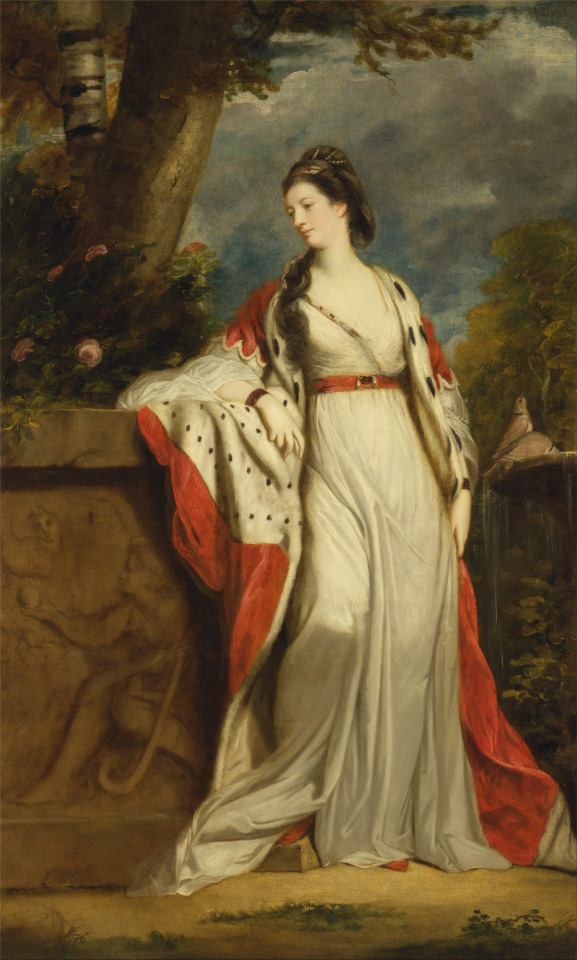
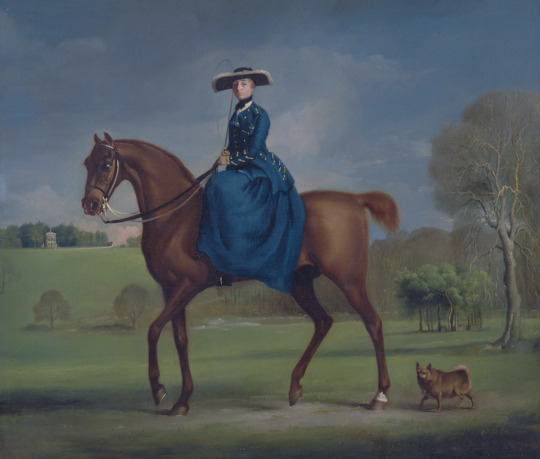

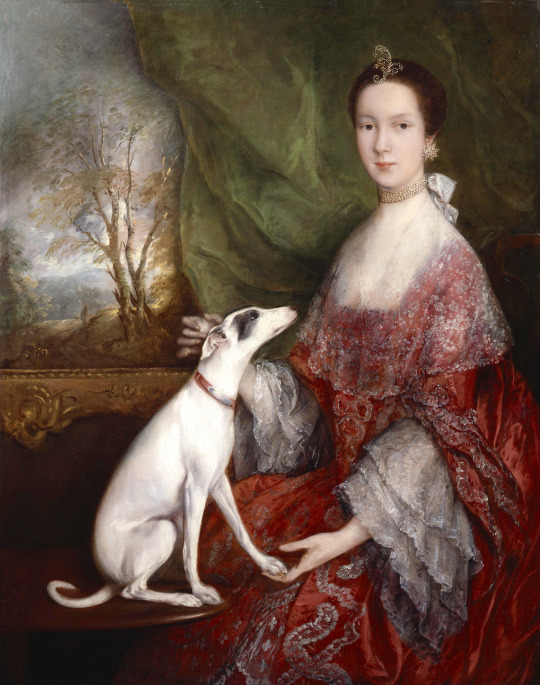
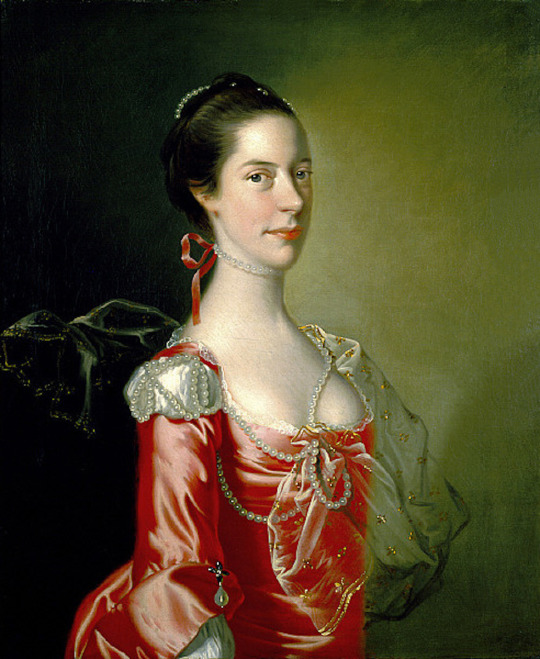
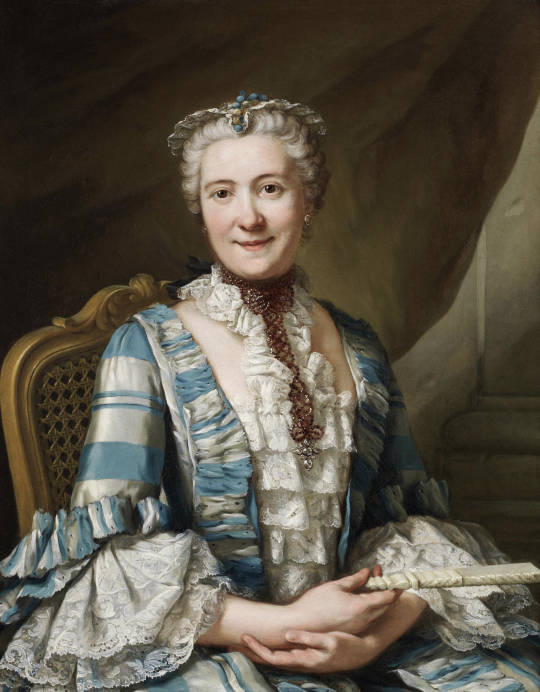


It’s 1760 -
Top left: 1760 Elizabeth Gunning, Duchess of Argyll by Allan Ramsay (private collection). From Art Renewal Center 20666X2636 @144 6..6Mj.
Top right: 1760 Elizabeth Gunning, Duchess of Hamilton and Duchess of Argyll by Sir Joshua Reynolds (Yale University, Yale Center for British Art, Yale University - New Haven, Connecticut USA) From Google Art Project via Wikimedia 2540X4224 @38 pixels/cm 3Mj.
Second row: 1760 Countess of Conningsby in the costume of the Charlton Hunt by George Stubbs (location ?). From equestrianculture.com/custom_type/visual-equestriennes/ 1994X1694 @144 3.6Mp.
Third row: 1760-1761 Society Taking a Promenade by Gabriel de Saint-Aubin (Hermitage). From the Unofficial Hermitage Web site 2552X3069 @150 2.7Mj.
Fourth row left: ca. 1760 Elizabeth Jackson, Mrs Morton Pleydell by Thomas Gainsborough (Gainsborough House - Sudbury, Suffolk, UK). From Philip Mould; left, top, and right edges fixed with Photoshop 2435X3087 @350 3Mj.
Fourth row right: 1760 Lady by Joseph Wright (Saint Louis Art Museum - Saint Louis, Missouri, USA). From tumblr.com/dashboard/blog/artist-joseph-wright; fixed spots and flaws in background w Pshop & enlarged by half 984X1200 @72 429kj.
Fifth row: 1760 Lady holding a fan, possibly Countess Brita Christina Törnflych by Donat Nonnotte (auctioned by Bonhams). From their Web site; removed spots with Photoshop 1369X1754 @72 4.2Mp.
Sixth row left: 1760 Louise Elisabeth de France in hunting dress by Jean-Marc Nattier and studio (auctioned by Sotheby's). From Wikimedia 813X1023 @250 358kj.
Sixth row right: 1760 Miss Day (Lady Anne Fenoulhet) by Sir Joshua Reynolds (Carnegie Museum of Art - Pittsburgh, Pennsylvania, USA). From their Web site; fixed discoloration flaws and spots w Pshop 1331X1589 @300 579kj.
#1760 fashion#Georgian fashion#Louis XV fashion#Rococo fashion#Elizabeth Gunning#Allan Ramsay#Joshua Reynolds#Countess of Conningsby#George Stubbs#equestrian dress#Gabriel de Saint-Aubin#panniers#Elizabeth Jackson#Thomas Gainsborough#lace bertha#lace engageantes#Joseph Wright#hair jewelry#Brita Christina Törnflych#Donat Nonnotte#robings#fan#Louise Elisabeth de France#Jean-Marc Nattier#Anne Fenoulhet#hat#neck band#partlet
25 notes
·
View notes
Photo

Lorenzo Bartolini (IT-FR, 1777 - 1850)

L’Ammostatore, or Pigiatore d’uva, or Bacco fanciullo, c. 1816-20. Plaster model w marks for transfer in marble, H. 158 cm [The Masher/The Grape Presser/infant Bacchus] - Archimagazine
Galleria dell’ Accademia di Firenze
The marble version of this statue is in Saint Petersburg, The State Hermitage Museum - UNL Arts & Humanities
Andrea del Verrocchio inspired Bartolini’s l’Ammostatore (Grape Presser, c. 1820), a work executed several times after this plaster model. Bartolini evokes Verrocchio’s David (1464-9) but reinterprets the pose with new formal significance and a fresh narrative scheme.
When in Paris, Bartolini devoted himself not only to ancient sculpture but literature as well. He and his roommates at the Capuchin Convent took part in the lively debate between the reconstructed “Greece” of modernity and the Greece being discovered through historiography and archeology.
Bartolini and Ingres championed ancient art and that of the Quattrocento (and Florentine Renaissance), albeit with a unique, personal touch and a foundation in the Neo-Classical principles inherited from Jacques-Louis David. Taking up residence in David’s relocated studio in the Capuchin Convent, they assimilated their teacher’s emphasis on drawing and the use of live models, but they were also captivated by John Flaxman, whose illustrations and sculpture exhibited a range of freedom previously unknown to continental Neo-Classicism. This marked the beginning of a road that would lead Bartolini back to his Italian homeland enflamed with a passion for natural beauty and minute detail. - New York Arts, 2011
#Lorenzo Bartolini#sculpture#child#Dionysus#Bacchus#plaster#marble#reference#Verrocchio#Ingres#Renaissance#inspiration#pioneer#wine
36 notes
·
View notes
Photo

Untitled (Hermitage Hotel des Princes), Joseph Cornell, c.1950, Saint Louis Art Museum: Modern and Contemporary Art
https://www.slam.org/collection/objects/29123/
7 notes
·
View notes
Photo

Paul Cézanne, Le fumeur. Homme à la pipe, 1891-1892 (Hermitage Museum, Saint Petersburg) Dazzled by the wonders of the admirable Morozov Collection, Icons of Modern Art, a collection currently shown at the Fondation Louis Vuitton in Paris, for the very first time outside of Russia. (à Fondation Louis Vuitton) https://www.instagram.com/p/CWLpS1DAlpz/?utm_medium=tumblr
1 note
·
View note
Photo

Movies I watched this week / 11
Ship of Theseus, The awesome Discovery of the Week:
A philosophical 2012 Indian art-house masterpiece, based on the Heraclitus thought experiment that asks, if an object that has had all of its components replaced remains the same object.
It tells 3 separate stories that are seemingly unrelated. The first introduces a young Egyptian photographer who is blind and creates her street art based on sounds she hears. The second is about a dying Jain monk, fighting to ban animal testing in India. The third is about a poor bricklayer whose stolen kidney was sold illegally to an unsuspecting Swedish man. The uniting finale is a moving reflection on Plato’s allegory of the cave.
It may not sound appealing, but the film is absolutely beautiful, surprising, compelling and original.
Also found on YouTube in 720p BluRay Quality. Good reviews by Nona Prince and an essay: Visual Metaphors in the film (Please read only after seeing the film itself)
✴️
First watch: Laura - 1944 absurd film noir mystery directed by Otto Preminger. “I shall never forget the weekend Laura died.”...
Style over substance. 8/10.
Also, I didn’t know that Vincent Price was so tall.
Theme from film.
✴️
Steven Soderbergh‘s The Girlfriend Experience. Real life mega porn star Sasha Grey in her first cross over role. She plays a high-end escort who is paid to act as her clients' emotional companion.
I loved it as a first act, but the story was missing act two.
✴️
The fantastic history of R. "Bob" Dobbs and The Church of the SubGenius! Better than wikipedia!
✴️
I haven’t seen any Louis de Funès films for over 50 years. Surprisingly, Jo, The Gazebo, a typical 1971 screwball comedy, stayed relatively funny and fresh with all the mimicry and jokes I remember from my childhood. 5+
✴️
The Night of the Iguana, John Huston’s classic drama. Richard Burton is a disgraced minister at the end of his rope who is ready "to take the long swim to China". Tennessee Williams in Puerto Vallarta.
“What is important is that one is never alone...”
✴️
2 X Alfonso Cuarón:
* Road to Roma - Interview with Cuarón, deconstructing the ‘making of’ his wonderful 2018 movie. Seeing the colorful process Behind the Scenes, in comparison to the Black and White canvas, is breathtaking. 10/10.
* His previous film - Gravity: A mainstream movie with only 2 actors. Exciting, too thrilling for me.
✴️
First watch: Russian Ark, an experimental story and a technical tour de force. It was recorded in a single, unedited take of 96 minutes at the Hermitage Museum in Saint Petersburg, on 23 December 2001, with a cast of over 2000 costumed actors. It follows 300 years of Russian history, guided by a 19th-century French diplomat.
✴️
Lost in America - “This is just like ‘Easy Rider.’ Except, now it's our turn. I mean, we can drop out and we can still have our nest egg!”
Loved it then, loved it now.
✴️
Another, similar film from the same time (1991) and atmosphere, Steve Martin’s LA Story - Adored it then, loved it now.
“Some of these buildings are over TWENTY years old!”
✴️
Of Alan J. Pakula‘s “Paranoia Trilogy”, I always preferred “The Parallax View” and “All the President's Men”. Maybe because even Pakula had a hard time describing an affair between a call girl and a client without resorting to tired old cliches. But watching Klute for the first time in many years, all but the predictable ending is actually first rate.
He should have called it Bree, though.
Appreciation of composer Michael Small, who scored Klute as well as eight more of Pakula’s movies.
✴️
Butter - a nearly-wonderful comedy about a little orphaned black girl who competes at a butter sculpture contest at the Iowa State Fair.
✴️
Hitchcock's favorite plot, “Innocent Person Wrongly Accused”, in North by Northwest, with opening-credits sequence by Saul Bass, and still effective crop dusting attack.
Most of it is ridiculously dated (55 year old accidental hero Cary Grant who has to get his mother’s approval, and the final shot of the Freudian train speeding into the tunnel). It’s still a fun ride.
✴️
My first Almodóvar, All About My Mother. A melodramatic Telenovela world of junkies, transsexuals, AIDS, prostitution and the theater. It’s only during the second half that the film clicked for me.
✴️
The Visual Effects of Psychedelics, from Effectindex. Must be watched in full screen. Real life example.
✴️
I spent 4 long hours entangled with Woody Allen’s sexual abuse in the new disgusting documentary Allen v. Farrow.
Technically, the worst part of this are the unbearable, constant layers of background music that drowns every scene with emotional guidelines. I wish they would stop doing it once and for all.
Not necessary me, but Why I Will Never Watch a New Woody Allen Film Again.
✴️
Another short Haring bio - How Keith Haring Injected Childlike Joy Into His Art.
✴️
The 2020 Invisible Man, Peggy Olson version: Somehow-interesting horror premise, but not my cup of tea. Points for the plot twist at the end. 2/10.
- - - - -
Throw-back to the art project:
Annie Hall Adora.
- - - - -
(My complete list is here)
1 note
·
View note
Photo

The Saints Can Teach Us How to Forgive
It goes against our sinful human nature to renounce vengeance and to leave our malefactors unpunished, but this is what is expected of us. “‘Vengeance is mine; I will repay,’ says the Lord.” (Rom. 12:19). This very difficult teaching was obeyed by the saints — although in some cases, not without much struggle — and we must also heed it.
The first Christian martyr, St. Stephen, gives us a powerful example of Christian forgiveness. The Acts of the Apostles tells how he was stoned to death for his fearless proclamation of the Gospel. His last words were “Lord, do not hold this sin against them.” (Acts 7:60)
This was also the sentiment expressed by the virgin and martyr St. Maria Goretti, who was murdered in 1902. Maria was assaulted by a neighboring youth named Alessandro Serenelli; when she resisted his sexual advances, the enraged youth repeatedly stabbed her. Before dying in a hospital the following day, Maria expressed her forgiveness of Alessandro.
St. John Vianney noted, “The saints have no hatred, no bitterness; they forgive everything, and think they deserve much more for their offenses against God.” For example, St. Louis IX, who reigned as King of France for thirty-five years, was known for his mercy and impartial justice and even forgave members of the nobility who unsuccessfully rebelled against his rule.
The founder of the Society of Jesus, St. Ignatius of Loyola, once walked a hundred miles during the winter to nurse a man who had fallen ill — a man who, only a few weeks earlier, had stolen Ignatius’s meager savings.
During the persecution of the Church by Queen Elizabeth I of England, the priest and martyr St. Edmund Campion was betrayed and arrested; while in prison, he was visited by the man who had betrayed him. Not only did Edmund forgive his betrayer; he also urged him to leave England, where he might be in danger himself, and gave him a letter of safe-conduct to a Catholic nobleman in Germany.
Our Lord’s parable of the unforgiving servant (Matt. 18:23-35) reminds us that if we insist on strict justice in the cases of those who’ve sinned against us, we will also be held fully liable for our own far greater offenses against the infinite majesty of God. Because the saints were so honest in admitting their own sins, it became very easy and natural for them to forgive the offenses of others.
How can we learn to control our natural tendency to lash out against those who hurt us? After all, our sincere desire to practice Christian forgiveness can, under certain circumstances, easily be overwhelmed by strong feelings of rage or personal affront. Tsixteenth-century priest St. Philip Neri suggested that we practice controlling our emotions: we pretend that we’ve just suffered terrible insults or misfortune and then imagine ourselves imitating Christ’s example by bearing these burdens with patience and charity. This sort of rehearsing will eventually make it easier for us automatically to respond in a more loving way to real affronts.
Also, as St. Augustine notes, “There are many kinds of alms, the giving of which helps us to obtain pardon for our sins; but none is greater than that by which we forgive from our heart a sin that someone has committed against us.”
In God’s eyes the most dignified or noble response to an injury is to turn the other cheek.
One night two thieves stole the oxen that belonged to the hermit St. Philip of Zell, but in trying to escape, they got lost in the woods, and at sunrise, to their great dismay, they found themselves back in front of Philip’s hermitage. The saint emerged, knowing what had happened, and the confused and frightened thieves begged his forgiveness. Philip welcomed and reassured them, and let them go — but only after feeding them. As these examples show, true Christian forgiveness isn’t meant to be only a religious concept, but a way of life.
Sometimes forgiving those who wrong us can set the stage for miracles of grace. As St. John of the Cross said, “Where there is no love, pour love in, and you will draw out love,” and several examples verify the truth of this observation. For instance, the thirteenth-century priest St. Peregrine Laziosi was quite irreligious as a youth and actively involved himself in a political movement against the Church. The Pope sent St. Philip Benizi to mediate a dispute, but he was accosted by Peregrine, who struck him in the face. When St. Philip responded simply by obeying our Lord’s teaching to turn the other cheek (Luke 6:29), the future St. Peregrine immediately repented of what he had done and converted to Catholicism.
The great bishop of Geneva, St. Francis de Sales, was intensely hated by a lawyer there, who shot at the saint; he missed Francis, but struck a priest who was standing with him. Accordingly, the would-be assassin was sentenced to death. Francis, however, pleaded on his behalf, and his death sentence was commuted. Even so, the lawyer showed no gratitude, but actually spat in Francis’s face. The saint responded sadly, “I have been able to save you from human justice, but unless you change your dispositions, you will fall into the hands of Divine Justice, from which no power can save you.” As St. Francis shows us, the fact that not everyone will accept our offer of forgiveness doesn’t excuse us from the obligation of extending it.
Is it always easy to forgive others? Certainly not. Anger is a powerful emotion, and even saints can be tempted by a desire for revenge, but they simply try harder to use the help God provides to overcome these feelings. When his father and brothers were murdered, Bl. Peter of Pisa wanted to leave his monastery and avenge their deaths, but his sister Bl. Clare Gambacorta aided him in rising above this temptation. By fervent prayer and with the help of his sister’s example, Peter arrived at the point where he could sincerely forgive the murderers.
An even more dramatic conversion and act of mercy involved St. John Gualbert. John’s older brother Hugh was murdered by someone pretending to be a friend. John swore vengeance, and one day encountered his unarmed enemy in a narrow passage that allowed no room for escape. Drawing his sword, John advanced, but was surprised when the murderer fell to his knees and crossed his arms on his breast. This posture reminded John of how Christ forgave His enemies while on the Cross. Profoundly moved, John put away his sword, embraced his enemy, and left him in peace. (It’s said that John then went to a church to pray, and the image of Christ on the crucifix there miraculously bowed its head in recognition of John’s sincere repentance and his act of forgiving his enemy.)
John Gualbert, like every other saint before and after him, came to realize the absolutely essential need to forgive our enemies, for Christ will reign only in a heart that seeks to be at peace.
For Further Reflection
“If you are suffering from a bad man’s injustice, forgive him, lest there be two bad men.” — St. Augustine
“Pardon one another so that later on you will not remember the injury. The recollection of an injury is itself wrong. It adds to our anger, nurtures our sin, and hates what is good. It is a rusty arrow and poison for the soul. It puts all virtue to flight.” — St. Francis of Paola
“I cannot believe that a soul which has arrived so near to Mercy itself, where she knows what she is, and how many sins God has forgiven her, should not instantly and willingly forgive others, and be pacified and wish well to everyone who has injured her, because she remembers the kindness and favors our Lord has shown her, whereby she has seen proofs of exceeding great love, and she is glad to have an opportunity offered to show some gratitude to her Lord.” — St. Teresa of Avila
FR. JOSEPH M. ESPER
2 notes
·
View notes
Photo

Valentine of Milan Mourning her Husband, Louis I, Duke of Orléans, by Fleury-François Richard. Hermitage Museum, Saint Petersburg.
14 notes
·
View notes
Text
SAINT OF THE DAY (April 2)
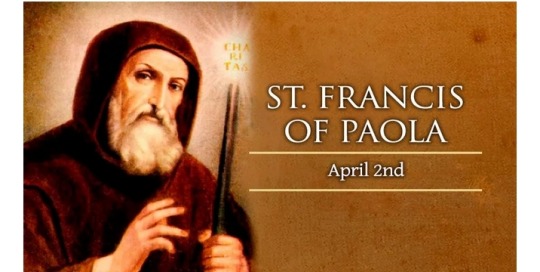
Catholics will remember St. Francis of Paola on April 2.
The saint founded a religious order at a young age and sought to revive the practices of the earliest monks during a period of corruption in the Church.
Francis was born in the Southern Italian region of Calabria during 1416. His parents, who maintained a strong devotion to St. Francis of Assisi, named their son after him.
The boy's father and mother had little in the way of wealth, but they passed on a rich spiritual heritage to their son, with the hope that he would imitate his namesake.
The young Francis showed signs of a remarkable spiritual life, following his parents' lead in accepting poverty as a path to holiness.
When his father placed him in the care of a group of Franciscan friars to be educated at the age of 13, Francis made a personal decision to live strictly according to the rule of their religious order.
After a year with the friars, Francis rejoined his parents as they made a pilgrimage to Assisi, Rome, and the historic Franciscan church known as the Portiuncula.
When the family returned to their hometown of Paola, Francis – at the age of only 15 – asked his parents' permission to live as a hermit, in the manner of the earliest desert fathers such as St. Anthony of Egypt.
The young monk slept in a cave and ate what he could gather in the wild, along with occasional offerings of food from his friends in the town.
Within four years, two companions had joined him. The townspeople assisted in building three individual cells for the hermits, as well as a chapel where a priest would offer Mass.
With approval from the local archbishop, this small group continued to grow into a larger religious order, without compromising the young founder's insistence on penitential and primitive living conditions.
They were first known as the Hermits of St. Francis of Assisi but later renamed the “Minimi” (or “Minims”), meaning “the least,” and signifying their commitment to humility.
Francis and his monks were notable not only for their austere lifestyle but also for their strict diet, which not only eliminated meat and fish, but also excluded eggs, dairy products, and other foods derived from animals.
Abstinence from meat and other animal products became a “fourth vow” of his religious order, along with the traditional vows of poverty, chastity and obedience.
Francis instituted the continual, year-round observance of this diet in an effort to revive the tradition of fasting during Lent, which many Roman Catholics had ceased to practice by the 15th century.
Ironically, Francis' pursuit of solitary communion with God attracted attention from a range of important figures, including several European kings and other nobility along with popes and bishops.
Some of these men regarded Francis as a spiritual leader in a corrupt age, while others may have been more interested in his gifts of prophecy and miraculous healing.
Francis traveled to France at the request of Pope Sixtus IV, taking with him his nephew Nicholas, whom he had raised from the dead.
There, the notoriously power-hungry King Louis XI was approaching the point of death himself. He hoped that Francis would perform a miracle and restore his health.
Francis told the king bluntly that he should not fear the end of his earthly life but the loss of eternal life.
From that time, the hermit became a close spiritual adviser to the king. He discussed the reality of death and eternity with him. He urged him to surrender his heart and soul to God before it was too late.
The king died in Francis' arms in 1483.
Louis XI's son and successor, Charles VIII, maintained the monk as a close adviser in spiritual and even political affairs.
Nonetheless, Francis persisted in following the monastic rule he had developed while living in his hermitage outside of Paola.
He continued as superior general of the Minim Order and founded new monasteries in France.
Francis sensed that his death was approaching at the age of 91 and returned to living in complete solitude for three months to prepare himself.
When he emerged, he gathered a group of the Minim brothers and gave them final instructions for the future of the order.
He received Holy Communion for the last time and died on April 2, Good Friday of 1507.
He was beatified on 1 November 1518 and canonized 12 years after his death on 1 May 1519 by Pope Leo X.
Although the Minim order lost many of its monasteries in the 18th century during the French Revolution, it still continues to exist, primarily in Italy.
11 notes
·
View notes
Photo

Jean-Pierre Louis Laurent Houël (French, 1735-1813), "Chestnut Tree, Slope of Mount Etna/Castagno (dei cento cavalli), pendici dell'Etna (Sant'Alfio, Catania)" (ca. 1776-79)
Gouache
Saint Petersburg, Hermitage
7 notes
·
View notes
Text

SAINTS OF THE DAY FOR MAY 01
St. John-Louis Bonnard,Jean-Louis Bonnard (b. 1 March 1824 at Saint-Christôt-en-Jarret, Diocese of Lyon; beheaded 1 May 1852) was a French Roman Catholic missionary to Vietnam, one of the Martyrs of Vietnam, canonized in 1988,May 1
ST JOSEPH THE WORKER, SPOUSE OF THE BLESSED VIRGIN MARY, PATRON OF WORKERS May 1-St Joseph The Worker, Spouse of the Blessede Virigin Mary, Patron of Workers - https://www.vaticannews.va/en/saints/05/01/st-joseph--the-worker--spouse-of-the-blessede-virigin-mary---pat.html
ST. JEREMIAH, PROPHET
Jeremias is the prophet of mourning and of symbolical suffering. This distinguishes his personality from that of Isaias, the prophet of ecstasy and the Messianic future, of Ezechiel, the prophet of mystical (not typical) suffering, and of Daniel, the cosmopolitan revealer of apocalyptic visions of the Old Covenant.
May 1
St. Bertha of Kent, The first Christian queen of England, a Frankish princess. She married Ethelbert of Kent, a pagan king, and she brought her chaplain, Luidhard, to the court. Ethelbert welcomed St. Augustine to Kent in 596 . Feastday May 1
St. Asaph, 600 A.D. First bishop of Asaph in Wales also called Asa. He is believed to have lived in a hermitage near Tenegel, near Holywell. He is also described in a life of St. Kentigern, or Mungo. While still young, Asaph served Kentigern. Asked to bring Kentigern a piece of wood for the fire, Asaph brought live coals in his apron, an event that alerted Kentigern to Asaph's sanctity. When Kentigern left the area in 573, Asaph was consecrated a bishop. Asaph's relatives, Deiniol, Tysilo, and others were honored as saints.
St. Brieuc, 510 A.D. Bishop educated by St. Germanus, in Auxerre, France. He is believed to have been born in Dyfed or Cardiganshire, Wales, circa 420. Ordained in France, Brieuc returned to England as a missionary. Known also as Briocus, Briomaglus, or Brioc, he converted his parents and became known for his miracles. He also converted Conan, a local ruler of Brittany, France, and founded a monastery near the present site of the town of Saint-Brieuc in Brittany. He remained in Brittany, dying at the age of ninety. Brieuc is venerated in Cornwall, England, and is credited with stopping a plague.
St. Ceallach, 6th century. Disciple of St. Kiernan, a bishop, sometimes called Kellach or Celsus. He was a bishop of Killala, Ireland, but ended his life as a hermit. Some records list him as a martyr.
0 notes